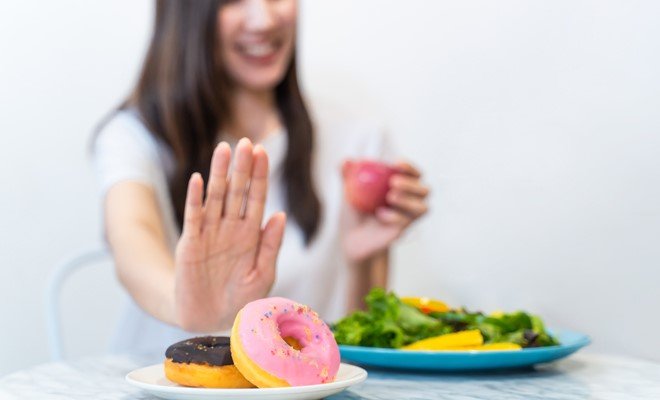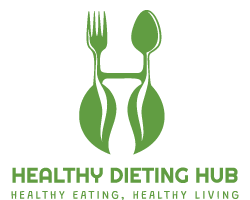
Approximately 422 million people suffered from diabetes around the world in 2014, compared to 108 million people in 1980. Between 2000 and 2016, there was a 5% increase in premature mortality from diabetes. The World Health Organization (WHO) estimated that diabetes was the seventh leading cause of death in 2016. All this tells us that around the world, many people have diabetes , suffer from its complications and it is a major cause of death, so it is very important to know about the disease in order to prevent or reduce the risks of suffering from it, since many people may have a higher risk due to genetic predisposition.
Diabetes is a chronic disease that seems to affect more people every year. Therefore, for the WHO it has been very important to make the population aware of this disease and know the risks in order to avoid it, starting with improving eating habits.
What is diabetes?
When the body cannot produce the amount of insulin in the blood needed to absorb the glucose we get from food, it is when we talk about diabetes . This disease can be caused by poor insulin production (the hormone produced by the pancreas to control blood sugar), insulin resistance, or both.
There are different types of diabetes, the most common are type 1 and type 2 diabetes , the potentially reversible ones are carbohydrate intolerance, prediabetes and gestational diabetes, including some cases of type 2 diabetes. Regardless of the type of diabetes you suffer from, there is an excess of glucose circulating in the blood, a high level of glucose can cause serious health problems.
Now, glucose is vital for health since it is a very important source of energy for the cells that make up the brain (neurons), both muscles and tissues in general. In addition to being the main source of fuel for the body. With that said, we can now understand that the main role of insulin is to transport this glucose from the bloodstream to muscle, fat, and other cells that rely on insulin for uptake, where it is stored or used as an energy source.
People with diabetes have high blood sugar levels because they are unable to move sugar from the blood into muscle and fat cells, either to be burned or stored as energy. That is why once you have this disease, changes must begin .
Foods to avoid when you have diabetes
Food should always be taken care of, whether you suffer from a disease or not, it is advisable to maintain a good diet to avoid health problems. Thanks to the nutrients, proteins and vitamins that food contains, we can improve our defenses or harm them. However, diet in people with diabetes should be more careful or even strict since the risk of not following adequate treatment must be taken into account.
Generally, foods to avoid if you have diabetes include:
refined flours
Processed cereals (box)
Sugary drinks (soft drinks and juices)
Fried and other foods high in saturated and trans fats.
Foods high in salt , also called sodium.
Sweets, such as baked goods, candy, and ice cream.
In addition to all these foods, there are others that we are going to explain below that you should avoid if you have diabetes .
Foods with a high percentage of carbohydrates
Foods that have a high percentage of carbohydrates such as this type of flour cause an increase in the blood glucose level , which is why it is harmful for a diabetic person . Some of these foods are:
– Cakes
– donuts
– Pizza
– Industrial buns
– White plan
– Croissant
The consumption of drinks high in sugar is not recommended for diabetics since they produce an imbalance in the glucose level. It is necessary to avoid the excess of soft drinks, sweet juices or any other sugary drink.
Avoid some fruits
Some types of fruit are a health risk for patients with diabetes as they may contain a high percentage of sugar. Some examples of fruits that are not recommended are:
– Papaya
– plums
– pineapple
– Fruits in syrup
– Fig
Note: Ripe fruits are not recommended as the sugar level increases.
Sweets with a high percentage of sugar
They should not only be avoided due to their high sugar content, but also because they can lead to an increase in bad fats in the body that could lead to overweight , which is very dangerous in people with diabetes.
High-fat food
Depending on the patient’s metabolism is how the risk will be considered. However, it is important to avoid fatty foods such as those mentioned below:
– Popcorn with butter
– French fries
– Artificial snacks (ultra-processed)
– Pies
– cold meats
– Sausages
– Artificial sauces and added salts or condiments. Artificially processed sauces often contain chemical sweeteners that are harmful when you have diabetes. Others are often processed with honey or another ingredient that also contains a high level of sugar, which is still dangerous. Now, the salts could represent a risk, so it is advisable to avoid them or reduce their consumption.
Foods that are allowed in patients with diabetes
It is ideal for the patient to consume food in small portions every 3 hours, with 3 main meals and 2 to 3 snacks per day, always trying to respect the meal schedule. Foods that a person with diabetes can usually eat include:
Flax
Sunflower seeds
Nuts such as walnuts, hazelnuts, almonds or cashews
water, unsweetened tea
Stevia
Beans
corn chickpeas
Lentils
whole grains
Low-fat meats such as skinless chicken, fish, and turkey
Fruits such as green bananas, grapefruit, peaches, pears, apples, berries, and oranges
Vegetables such as tomato, cauliflower, carrot, chili, lettuce, broccoli, mushrooms, spinach, and eggplant
In addition to the foods you know you can eat if you have diabetes , there is the ‘plate method’ to control what you eat. This method consists of using a plate about 15 cm in diameter and half filling it with vegetables (spinach, broccoli…), then placing the meat or protein on a quarter of the plate so that, in the last quarter of the plate, some grain or starch source (lentils, beans or chickpeas). You can also consume a small cup of fruit or a piece of it, as well as drink a small glass of milk.
Despite the above, it is very necessary to consult a specialist to know the foods that can be consumed, since it can depend on many factors. It is also important that the follow-up be interdisciplinary, that is to say by the hand of a doctor (general practitioner or endocrinologist), a psychologist and a nutritionist, who will prepare an individualized plan with routine check-ups and laboratory studies that provide certainty for know the blood glucose levels and it can be affirmed that we have adequate control.
All this is necessary to maintain quality of life, to know which foods are allowed and which are prohibited and, in this way, prevent possible complications of diabetes.
Bibliographic references:
- American Diabetes Association. Foundations of care and comprehensive medical evaluation. diabetes care. 2016.
- Yardley JE, Sigal RJ. Exercise strategies for hypoglycemia prevention in individuals with type 1 diabetes. Diabetes Spectrum. 2015.
- Colberg SR, Sigal RJ, Yardley JE, et al. Physical activity/exercise and diabetes: a position statement of the American Diabetes Association. diabetes care. 2016.


